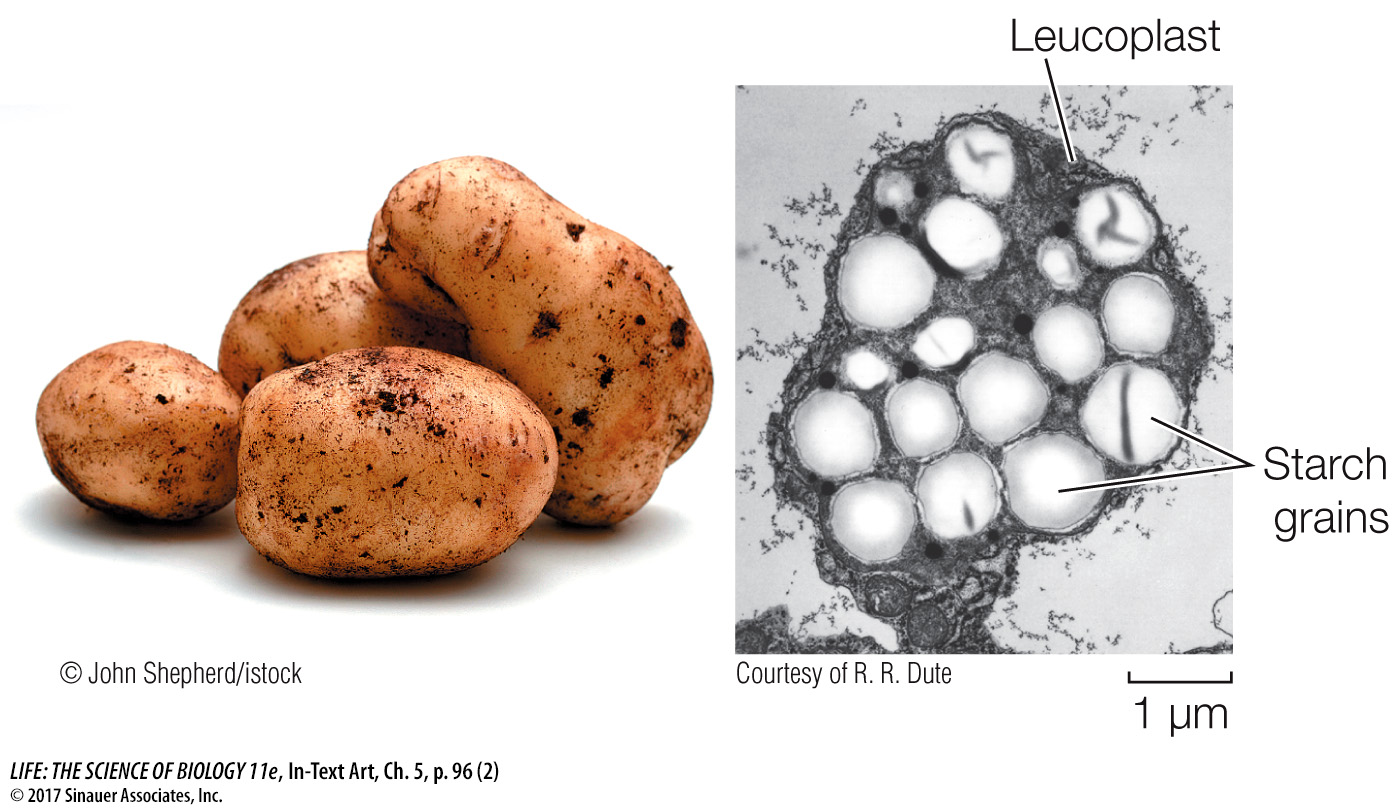Some organelles transform energy
A cell requires energy to make the molecules it needs for activities such as growth, reproduction, responsiveness, and movement. Energy is harvested from fuel molecules in the mitochondria (found in all eukaryotic cells) and from sunlight in the chloroplasts of plant cells. In contrast, energy transformations in prokaryotic cells are associated with enzymes attached to the inner surface of the cell membrane or to extensions of the cell membrane that protrude into the cytoplasm.
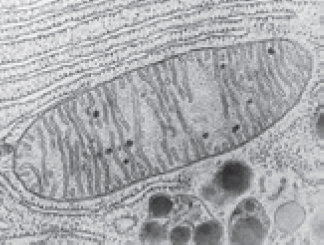 MITOCHONDRIA In eukaryotic cells, the breakdown of energy-
MITOCHONDRIA In eukaryotic cells, the breakdown of energy-
Typical mitochondria are somewhat less than 1.5 μm in diameter and are 2–
Mitochondria have two membranes. The outer membrane is smooth and protective, and it offers little resistance to the movement of substances into and out of the organelle. Immediately inside the outer membrane is an inner membrane, which folds inward in many places and thus has a surface area much greater than that of the outer membrane (Figure 5.11). The folds tend to be quite regular, giving rise to shelflike structures called cristae. The inner membrane exerts much more control over what enters and leaves the space it encloses than does the outer membrane. Embedded in the inner mitochondrial membrane are many large protein complexes that participate in cellular respiration.
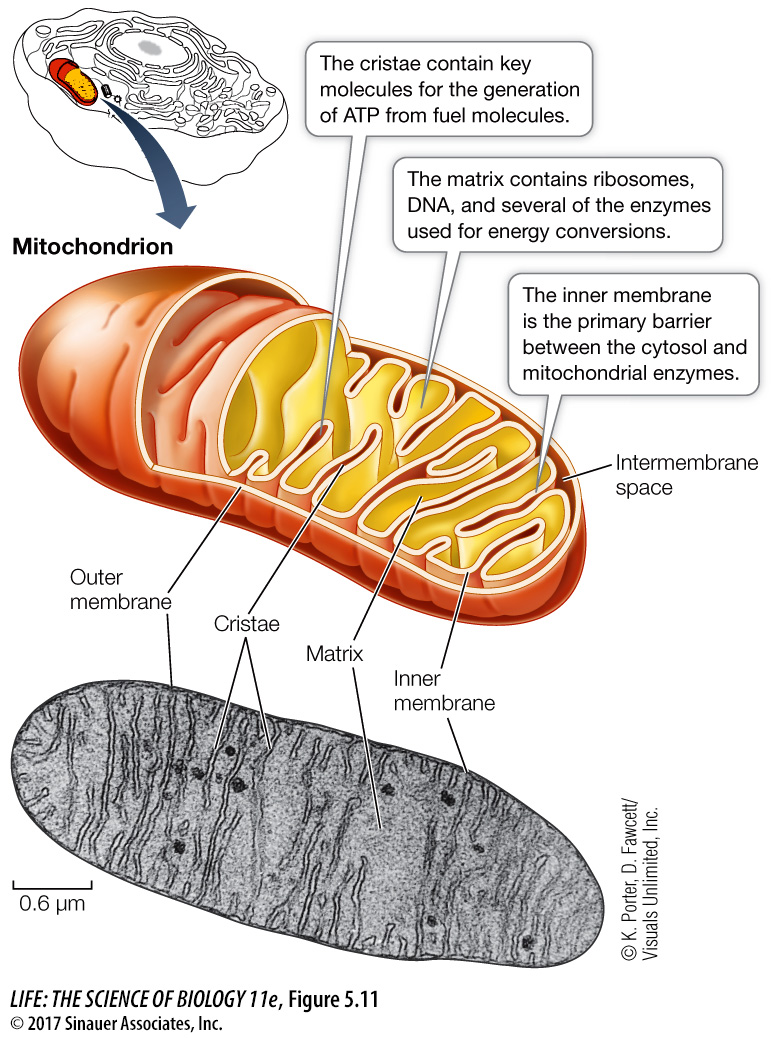
Q: What kinds of human cells would you expect to have a lot of mitochondria?
Cells with high energy requirements, such as muscle cells, would have a lot of mitochondria.
The space enclosed by the inner membrane is referred to as the mitochondrial matrix. In addition to many enzymes, the matrix contains ribosomes and DNA that are used to make some of the proteins needed for cellular respiration. As we will discuss later in this chapter, it is likely that this DNA is the remnant of a larger, complete chromosome from a prokaryote that may have been the mitochondrion’s progenitor. In Chapter 9 we will discuss how the different parts of the mitochondrion work together in cellular respiration.
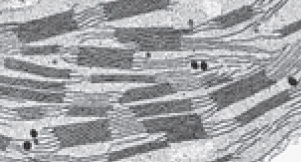 PLASTIDS One class of organelles—
PLASTIDS One class of organelles—
Just as melanosomes are a compartment for pigment in animal cells (see the chapter opening), so are chloroplasts, which contain the green pigment chlorophyll and are the sites of photosynthesis (Figure 5.12). In photosynthesis, light energy is converted into the chemical energy of bonds between atoms. The molecules formed by photosynthesis provide food for the photosynthetic organism and for other organisms that eat it. Directly or indirectly, photosynthesis is the energy source for most of the living world.
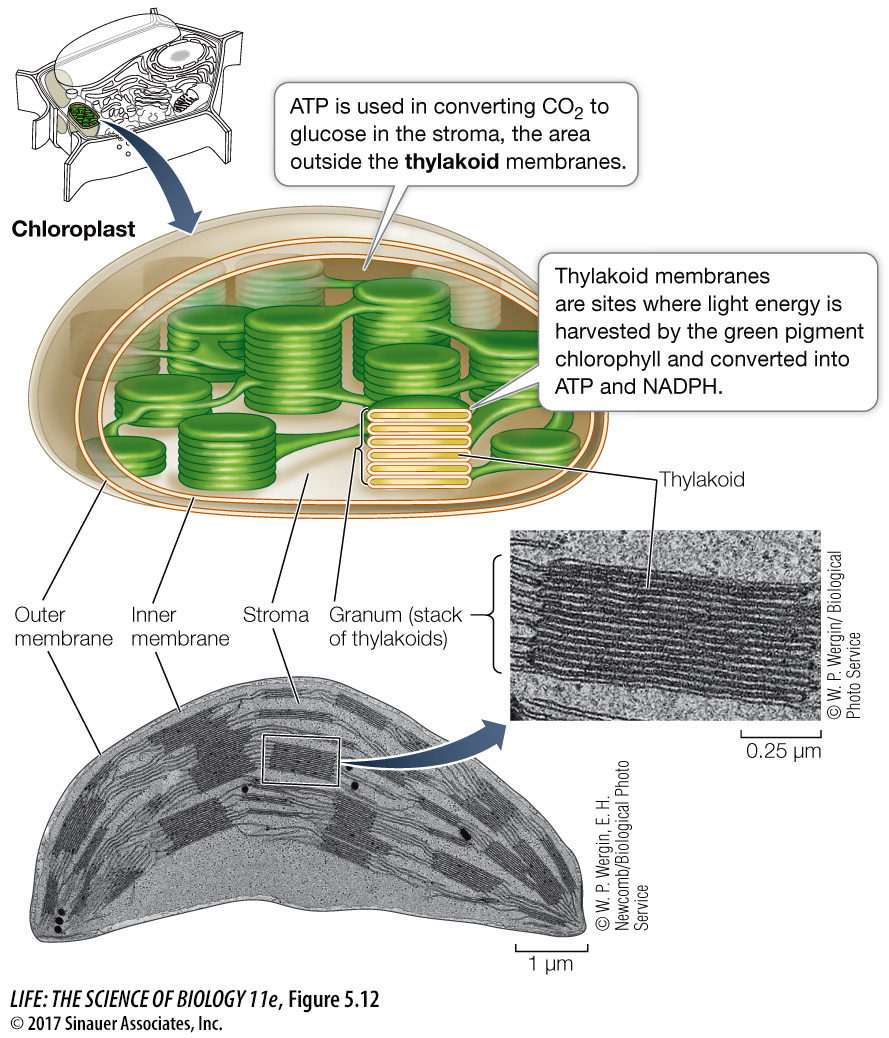
Like a mitochondrion, a chloroplast is surrounded by two membranes. In addition, there is a series of internal membranes whose structure and arrangement vary from one group of photosynthetic organisms to another. Here we concentrate on the chloroplasts of the flowering plants.
The internal membranes of chloroplasts look like stacks of flat, hollow pita bread. Each stack is called a granum (plural grana) and the pita bread–
In addition to lipids and proteins, the membranes of the thylakoids contain chlorophyll and other pigments that harvest light energy for photosynthesis (we will see how they do this in Key Concept 10.2). The thylakoids of one granum may be connected to those of other grana, making the interior of the chloroplast a highly developed network of membranes, much like the ER.
The fluid in which the grana are suspended is called the stroma. Like the mitochondrial matrix, the chloroplast stroma contains ribosomes and DNA, which are used to synthesize some, but not all, of the proteins that make up the chloroplast.
Other types of plastids, such as chromoplasts and leucoplasts, have functions different from those of chloroplasts. Chromoplasts make and store red, yellow, and orange pigments, especially in flowers and fruits—
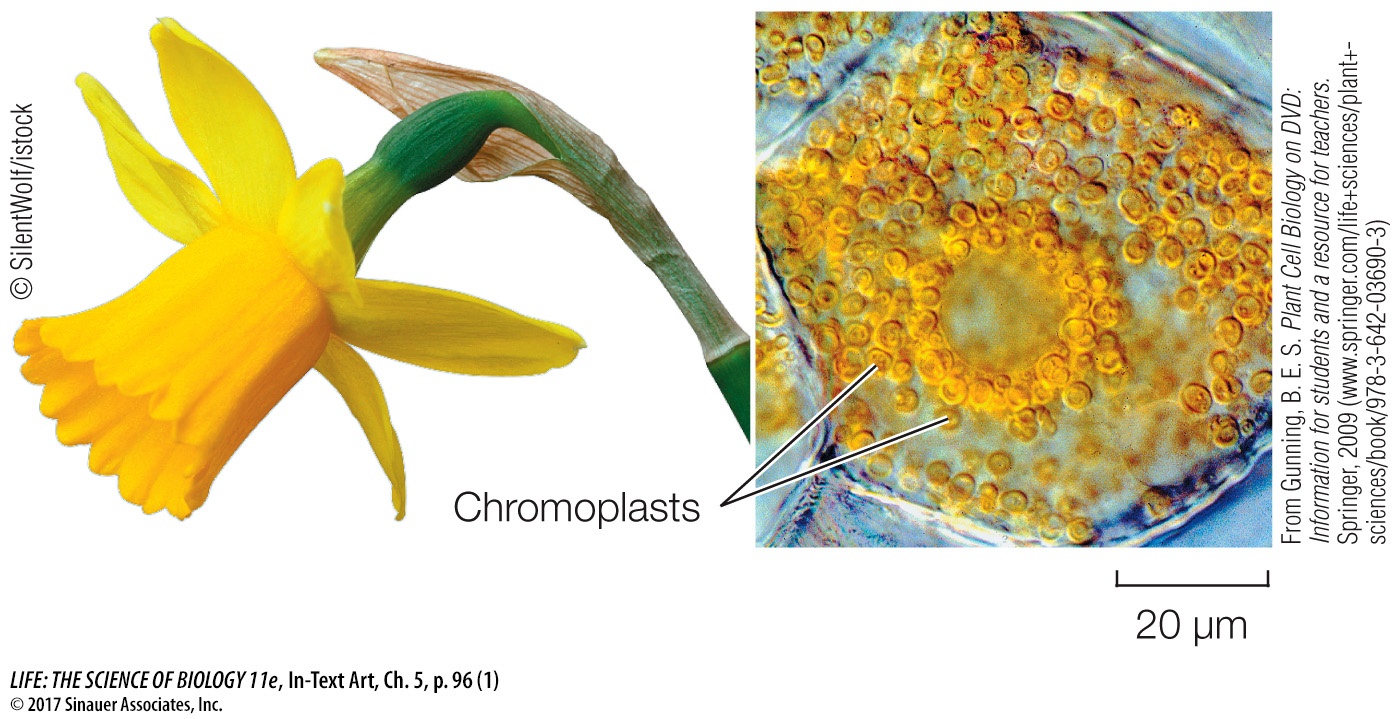
Leucoplasts are storage organelles that do not contain pigments. An amyloplast is a leucoplast that stores starch.
